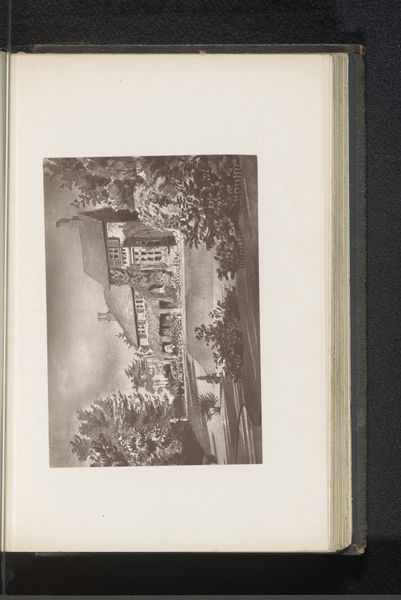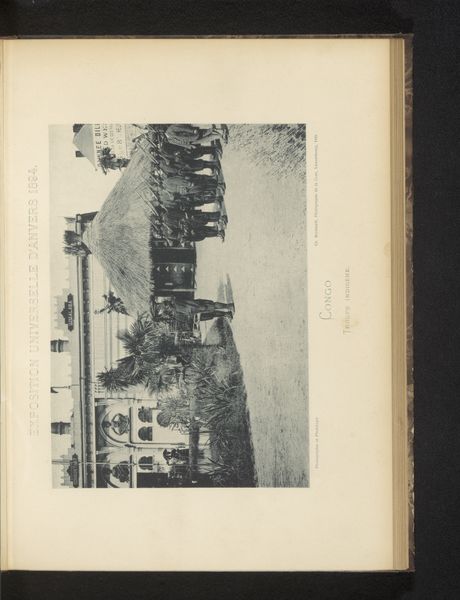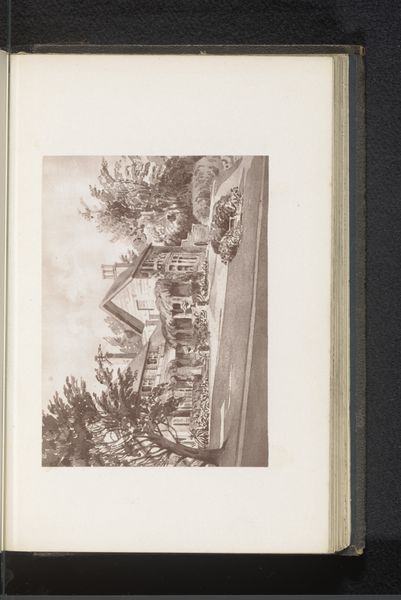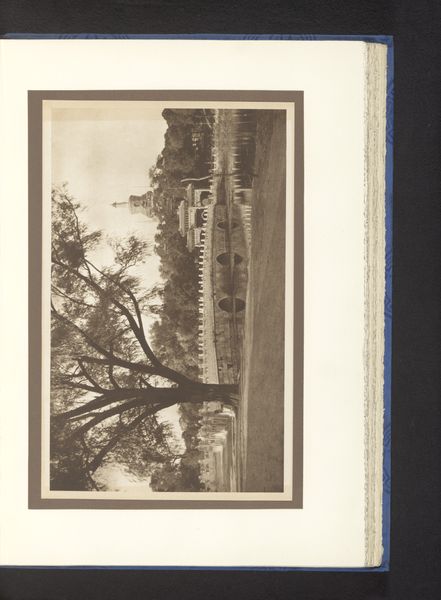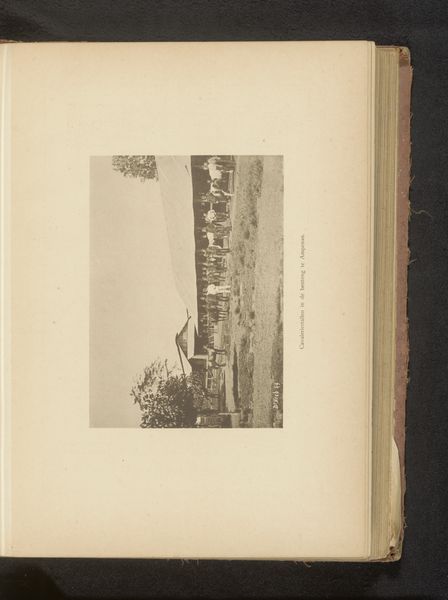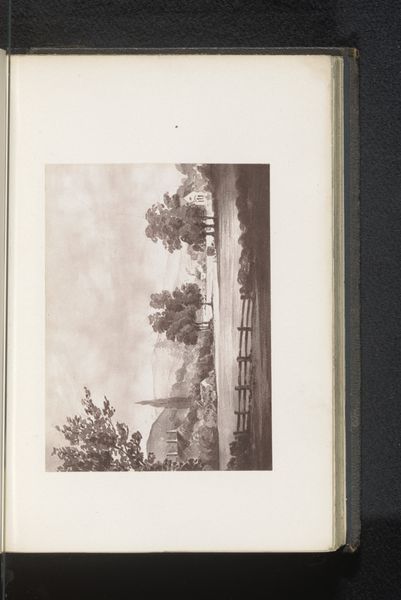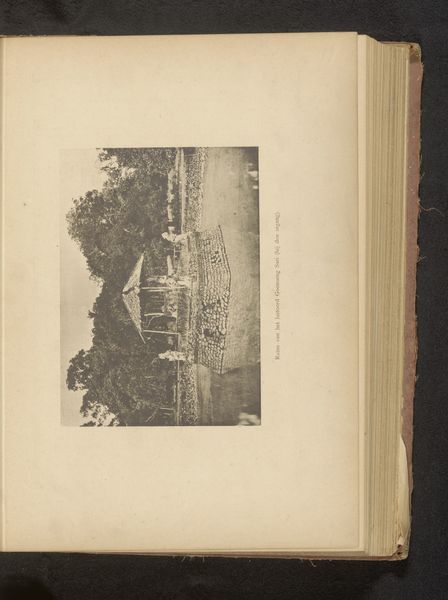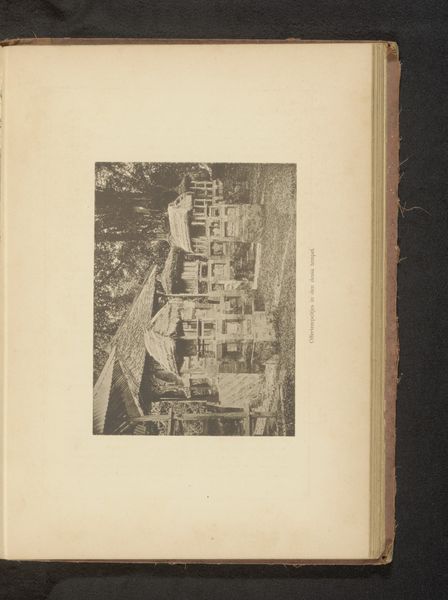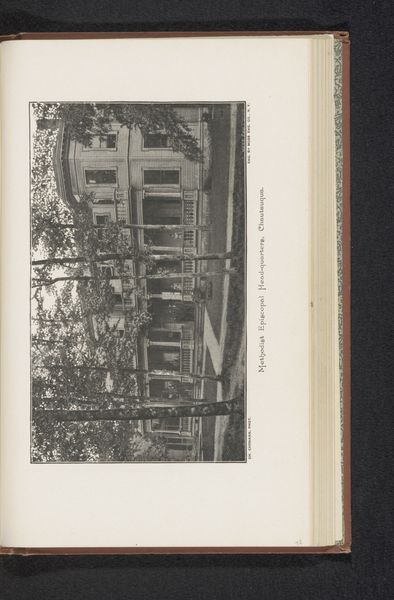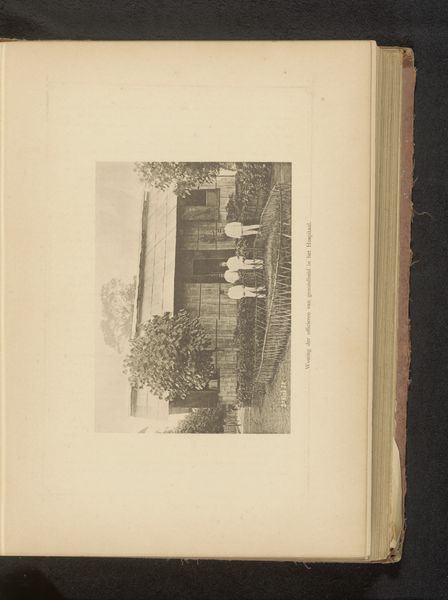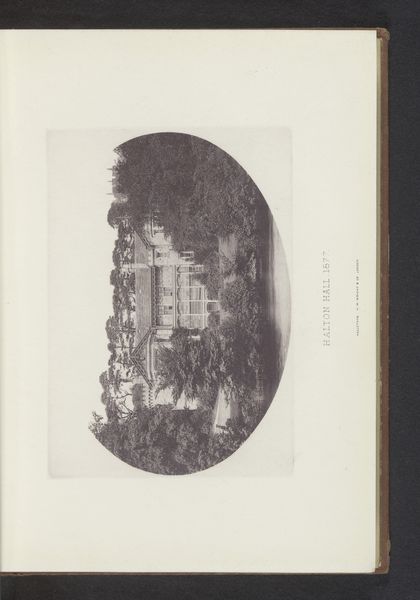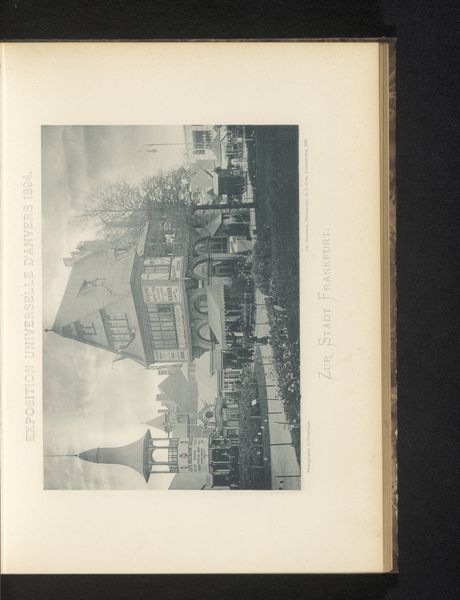
Fotoreproductie van een schildering, voorstellende een gezicht op Alderley Rectory te Cheshire before 1876
0:00
0:00
print, etching, photography
# print
#
etching
#
landscape
#
photography
#
coloured pencil
#
building
Dimensions: height 83 mm, width 115 mm
Copyright: Rijks Museum: Open Domain
Editor: Here we have a photo reproduction of a painting, "Fotoreproductie van een schildering, voorstellende een gezicht op Alderley Rectory te Cheshire," made before 1876 by an anonymous artist, combining print, etching and photography techniques. It feels like looking into a past era, almost romantic, yet the clear definition gives it an immediacy. What do you see in this piece, particularly regarding its historical context? Curator: I see a commentary on representation and power. The photograph, reproducing a painting of Alderley Rectory, layers different media – each carrying its own baggage. Photography, initially perceived as objective, here replicates a painted ideal of rural life, obscuring the social and economic realities of the time. How does this reproduction reinforce or challenge the notions of landed gentry and their place in society? Editor: That's fascinating! I hadn't considered how the layering of media contributes to a sort of distancing effect, almost like a commentary in itself. It’s interesting that the photograph is attempting to recreate something romantic, in its own way, like erasing history in real-time. Curator: Precisely. This erasure or romanticisation through visual media directly impacts our understanding of historical power structures. Who owned the Rectory? What were their politics? Whose stories are not being told in this idealized representation? What implications does this have for current representations of power and privilege? Editor: These questions make me reconsider how we understand images from the past. Thanks for that framing. I will not see such images again in a non-interrogative way! Curator: Wonderful. Thinking about these images, their production, and the society for which they were made is paramount for a feminist perspective on art history.
Comments
No comments
Be the first to comment and join the conversation on the ultimate creative platform.
